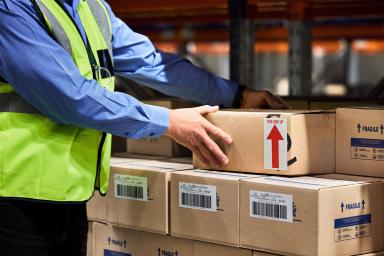From 1 July 2024 the Recovery Loan Scheme has been extended and rebranded to the Growth Guarantee Scheme. More information on the Growth Guarantee Scheme here.
General
Am I eligible?
To be eligible for a facility under RLS, your business (together with your business group, if applicable) must meet certain eligibility criteria, including but not limited to:
- Being engaged in trading activity (or, in respect of a person that is a registered charity or further education college, conducting its activities) in the UK with the core of its business operations in the UK;
- Generating more than 50% of turnover from trading activity (registered charities and further education establishments are exempt from this requirement for facilities offered after 9 March 2023);
- Having a turnover not exceeding £45 million per annum (on a group basis, where you are part of a group);
- Having a borrowing proposal considered viable by the lender. In making their assessment, lenders may, but are not required to, disregard concerns over a business’s short-to-medium term business performance due to the uncertainty and impact of Covid-19;
- Not being a business in difficulty, including not being in relevant insolvency proceedings;
- Not being a bank/building society; an insurer or reinsurer (can be an insurance broker); a public sector body; a state funded primary or secondary school; or an individual other than a sole trader or a partner acting on behalf of a partnership.
How do I access an RLS facility?
RLS was available through the British Business Bank’s accredited lenders which were listed on the RLS accredited lenders page. Some lenders that offered facilities under the previous iterations of RLS between 6 April 2021 and 30 June 2022 may not be accredited to offer RLS facilities from August 2022.
Accredited lenders should only offer finance through RLS if they are unable to offer a facility on equivalent terms without the guarantee. Whether your business is eligible for RLS and whether it is suitable for you will be for the accredited lenders to decide. Such lenders range from high street and challenger banks to asset-based and specialist local lenders.
What are the key features of RLS?
RLS supports a wide range of products, covering term loans, overdrafts, asset finance and invoice finance facilities. You can borrow up to a maximum of £2 million per business group, or up to £1 million for business groups in scope of the Northern Ireland Protocol. Read footnote text 1 Repayment terms are up to six years (for term loans and asset finance) and up to three years (for overdrafts and invoice finance facilities).²
Minimum facility sizes vary, starting at £1,000 for asset and invoice finance, and £25,001 for term loans and overdrafts.
Lenders should only offer finance through RLS if they are unable to offer a facility on equivalent or better terms without the guarantee.
Lenders will be required to undertake their standard credit, fraud, Anti-Money Laundering (AML) and Know Your Customer (KYC) checks for all applicants as well as certain fraud and financial crime assessments, as required under RLS. When making their assessment, lenders may overlook concerns over short-to-medium term business performance owing to the pandemic.
The scheme provides the lender with a government-backed 70% guarantee against the outstanding balance of the facility. Your business remains 100% liable for repayment of the facility.
-
Return to footnote location
1
A Northern Ireland borrower may borrow up to £1m unless such borrower operates in a sector where aid limits are reduced, in which case the maximum that can be borrowed is subject to a lower cap. These include agriculture, fisheries / aquaculture and road haulage.
What is the Recovery Loan Scheme (RLS)?
RLS aims to help smaller businesses across the UK, with turnover of up to £45 million, access finance they may not have had access to commercially on equivalent terms. If a lender can offer a commercial loan on equivalent terms without the need to make use of RLS, they should do so.
The scheme is designed to appeal to businesses that can afford to take out additional debt finance. It can be used for any legitimate business purpose including managing cashflow, investment and growth.
Scheme terms
Can I have another RLS facility if I have an existing CBILS/ CLBILS/ BBLS/ RLS facility?
Yes. If your business has taken out CBILS, CLBILS, BBLS and/or RLS facilities before 30 June 2022, you can access RLS providing you meet the RLS eligibility criteria and that any additional lending is considered affordable by the lender.
If you accessed CBILS, CLBILS and/or RLS facilities before 30 June 2022, this will not count towards your cumulative subsidy limit in calculating the maximum amount you can borrow through RLS. Any RLS Facility taken after 1 August 2022 will count towards your cumulative subsidy limit.
If you took out a BBLS, it may count towards your cumulative aid allowance when calculating the maximum amount you can access – you will have been informed by your BBLS lender at the time if your BBLS was provided under the EU’s de minimis Regulations.
Can I have multiple facilities across different product variants?
Yes, subject to meeting the scheme eligibility requirements and provided you do not borrow more than the maximum amount you are eligible for. The maximum amount your business can borrow across different facilities will depend on a lender’s assessment of affordability and scheme requirements.
Can I use RLS to refinance an existing BBLS/ CBILS/ RLS facility, in part or in full?
Yes, where total financing needs (including any increase) are greater than the minimum facility sizes available under RLS.
Any re-financing will be considered as a new application for RLS, so will be subject to meeting the eligibility criteria. Re-financing can be sought with your existing lender or a different accredited lender.
Existing BBLS borrowers are able to refinance under RLS, however, borrower protections and scheme eligibility/terms under these schemes differ. Businesses should first discuss with their lender.
The total amount a business can borrow, including any additional lending sought as part of the re-financing of an existing facility will depend on a lender’s affordability assessment and RLS requirements.
Can I use RLS to refinance an existing commercial facility?
Your business can, in certain circumstances, use an RLS facility to refinance existing debt. For example, where your business is seeking to put itself on a more stable financial footing and/or improve its working capital position, then in principle an RLS facility could be provided where the business meets the RLS eligibility criteria.
Refinancing can be undertaken with or without an increase in the original borrowing.
How long can I borrow for?
Term loans and asset finance facilities are available for up to six years, with overdrafts and invoice finance available for up to three years Read footnote text 3 .
-
Return to footnote location
3
A term extension up to a maximum of 10 years for existing RLS facilities can be made in certain situations, in connection with the provision of forbearance relating to the facility, at the discretion of the lender if within its usual forbearance policies.
What can I use an RLS facility for?
An RLS facility can be used for any legitimate business purpose including, but not limited to, managing cashflow, or investment and growth purposes.
What fees and interest rates can I expect?
Interest rates and fees charged by lenders will vary and will depend on the specific lending proposal, but lenders are required to pass on the economic benefit of the guarantee to your business after accounting for its costs in using the scheme, for example the scheme lender fee they are required to pay.
Please speak to your lender who will be able to give you full details on what interest rates will be payable.
What products does RLS support?
RLS supports a wide range of business finance facilities covering term loans, overdrafts, asset finance, and invoice finance.
RLS is available through the British Business Bank’s accredited lenders. Not every lender can provide each type of finance.
What size of borrowing does RLS support?
Minimum facility sizes vary, starting at £1,000 for asset and invoice finance, and at £25,001 for term loans and overdrafts.
The maximum facility value per business group is:
- £2 million for businesses across all sectors outside the scope of the Northern Ireland Protocol; or
- For businesses in scope of the Northern Ireland Protocol:
- £110,000 for businesses in the agriculture sector;
- £170,000 for businesses in the aquaculture and fisheries sector;
- £570,000 for businesses in the road haulage sector; and
- £1 million for businesses in all other sectors.
Accessing a facility through RLS counts as a subsidy. If your business has received any previous subsidy, this may reduce the maximum amount you can borrow.
Will I be required to provide a personal guarantee?
Lenders are allowed to take personal guarantees for facilities of all sizes, if taking a personal guarantee is part of their typical lending practice. Lenders cannot take your principal private residence as security.
A worked example to show what this means in practice:
- Business borrows £1 million facility with a £100,000 personal guarantee;
- Business pays off £400,000 then defaults, owing £600,000;
- Lender recovers £100,000 from other secured business assets such as a debenture (e.g., stock), leaving £500,000 outstanding;
- Call on personal guarantee is £100,000 leaving £400,000 as an initial loss to the lender;
- Lender can claim for 70% of this loss (£280,000) under the guarantee, leaving £120,000 as the final loss to the lender.
Eligibility
Am I eligible if I am a business in difficulty?
No, businesses in difficulty are not eligible for RLS. This includes:
- businesses that are assessed as not having a viable business proposition by the lender; or
- businesses in relevant insolvency proceedings.
Am I eligible if I am a start-up?
Yes, at the discretion of the lender and subject to meeting the RLS eligibility criteria.
For early-stage businesses in their first three years of trading, the British Business Bank’s Start Up Loans programme (loans from £500 to £25,000 at interest of 6% per annum) may be more suitable.
Visit startuploans.co.uk for more information.
Am I eligible if I am an exporter?
Exporters are eligible for the scheme provided the facility will not be used to:
- Run an advertising campaign outside the UK
- Manufacture a product which is only available to customers in a market outside the UK
- Establish a representative office outside the UK or appoint an agent outside the UK
- Set up or operate a distribution network outside the UK, or
- Fulfil a direct export order.
Your business will need to self-certify that you will not use RLS for these purposes.
Am I eligible if I am not an existing customer of any of the participating lenders?
Yes. RLS is open to all eligible businesses – your business does not need to be an existing customer of the lender you are approaching for finance, although facilities are provided at the discretion of the lender.
Am I eligible if I am part of a group that has accessed RLS?
The maximum amount that can be borrowed under RLS is at a business group level. A business group means all enterprises having at least one of the following relationships with each other:
- one enterprise has a majority of the shareholders’ or members’ voting rights in another enterprise;
- one enterprise has the right to appoint or remove a majority of the members of the administrative, management or supervisory body of another enterprise;
- one enterprise has the right to exercise a dominant influence over another enterprise pursuant to a contract entered into with that enterprise or to a provision in its memorandum or articles of association;
- one enterprise that is a shareholder in or member of another enterprise controls alone, pursuant to an agreement with other shareholders in or members of that enterprise, a majority of shareholders’ or members’ voting rights in that enterprise; or
- an enterprise is otherwise able, directly or indirectly, to control or materially to influence the policy of another enterprise as regards carrying on an economic activity that entails offering goods or services on a market, even if the enterprise does not have a controlling interest in that enterprise.
An ‘enterprise’ refers to any entity or person engaged in an economic activity, whatever its legal form. This includes private equity / venture capital shareholdings.
Am I eligible if I have accessed one or more of the Pay As You Grow repayment options under BBLS?
Yes, subject to meeting RLS eligibility criteria. Pay As You Grow is designed to alleviate borrowers’ financial difficulties, even before they arise, by giving borrowers flexibility in meeting their repayment obligations. Using Pay As You Grow will not affect a borrowers’ credit rating, but it may affect lenders’ future creditworthiness assessments. For example, when considering a request for additional funding, a lender will take into consideration incomings and outgoings, including existing debt repayments such as the BBLS facility. It will also consider a business’s total debt exposure which will again include the outstanding BBLS facility. Find out more information on Pay As You Grow.
Decision-making on whether a business is eligible for RLS is fully delegated to the accredited RLS lenders.
Am I eligible if I have received support from the Enterprise Investment Scheme (EIS)?
Yes. If your business has received funding through EIS, you are eligible, provided that you satisfy the other RLS eligibility criteria. In particular, if your business is a Northern Ireland Applicant (including any company in the same group, parent company or subsidiary) and has received risk finance aid totalling more than €14.8 million, there is a limit in terms of how much additional de minimis aid you can be granted in relation to the same risk finance measure (as you cannot go over a cap of €15 million of risk finance aid, or risk finance and de minimis aid combined). You should therefore be asked by your lender if you have received more than €14.8 million of risk finance aid and, if yes, you will not be eligible for aid under this Scheme. Examples of relevant risk finance schemes in the UK include the Enterprise Investment Scheme (EIS), Venture Capital Trusts (VCT), Seed Enterprise Investment Scheme (SEIS) and Social Investment Tax Relief (SITR).
Do I have to have been affected by Covid-19?
Most businesses will not have to self-declare they have been affected by Covid-19.
Charities and further education establishments that do not generate more than 50% of their turnover from trading activity in the UK are currently eligible until 31 December 2022 but will continue to need to declare they have been affected by Covid-19.
Is the scheme available for all sectors?
No. Banks, building societies, insurance companies, public-sector bodies, and state-funded primary and secondary schools are not eligible.
What types of businesses are eligible?
Provided that they satisfy the other eligibility criteria, RLS is open to:
- sole traders
- corporations
- limited partnerships
- limited liability partnerships
- co-operatives and community benefit societies, and
- any other legal entity carrying out business activity in the UK.
Your business (together with your business group, if applicable) must generate more than 50% of its turnover from trading activity in the UK (i.e., the sale of goods or services).
Charities and further education establishments are exempt from complying with this criterion for facilities offered after 9 March 2023.
Sign up for our newsletter
Just add your details to receive updates and news from the British Business Bank
Sign up to our newsletter

